This article was medically reviewed by Theodore Leng, MD. Dr. Leng is a board certified Ophthalmologist and Vitreoretinal Surgeon and an Assistant Professor of Ophthalmology at Stanford University. He completed his MD and Vitreoretinal Surgical Fellowship at Stanford University in 2010. Dr. Leng is a Fellow of the American Academy of Ophthalmology and the American College of Surgeons. He is also a member of the Association for Research in Vision and Ophthalmology, the Retina Society, the Macula Society, the Vit-Buckle Society, as well as the American Society of Retina Specialists. He received the Honor Award by the American Society of Retina Specialists in 2019.
There are 8 references cited in this article, which can be found at the bottom of the page.
wikiHow marks an article as reader-approved once it receives enough positive feedback. In this case, 89% of readers who voted found the article helpful, earning it our reader-approved status.
This article has been viewed 156,158 times.
Eye fatigue is similar in fashion to eye strain or tired eyes. It can happen due to numerous external stimuli to the eye. It is important to address common causes of eye fatigue in order to prevent it from happening all the time. It can easily be diagnosed and treated as well as prevented.
Steps
Understanding Eye Fatigue
-
1Learn the cause of eye fatigue. The causes of eye fatigue vary from person to person. It depends a lot on your particular circumstance as well as your daily activities. In order to alleviate the symptoms, you can try to determine the cause. Causes of eye fatigue include:
- Dry or rough feeling eyes
- Minimal amount of blinking, or low blink rate
- Medication side effects
- Due to another previous medical issue
- Chronic disease
-
2Recognize the symptoms. There are many different symptoms of eye fatigue. These may manifest differently in each person, depending on the cause and severity of the fatigue. The symptoms can include:
- Aversion or sensitivity to light
- Headache
- Itchy, red, or sore eyes
- Neck pain
- Blurred vision
Advertisement -
3Seek immediate medical attention. There are certain situations that may require you to seek medical help. If you have any concerns at all about the health of your eyes, see your eye doctor as soon as you can to address your concerns. Make sure you seek medical attention if you experience:
- A feeling of having a foreign object in your eye
- A decrease in your overall vision
- Any lightheadedness, faintness, or dizziness
- Any eye pain or other, non-eye related symptoms that accompany eye fatigue
-
4Diagnose eye fatigue. Although you may suspect eye fatigue, a true diagnosis can only be made by your eye doctor or other medical professional. If you experience any symptoms of eye fatigue, especially if they last for an extended time, make an appointment with your eye doctor. He or she will perform an eye exam and ask you a series of questions to figure out how your eyes have been feeling.
- Your doctor will also be able to eliminate other causes, such as infection or allergy.[1]
Resting Your Eyes
-
1Relax your eyes. Since eye fatigue means your eyes are tired, a quick and easy way to help alleviate the symptoms of eye fatigue is to relax your eyes.[2] Start by closing your eyes. This causes the natural tear film of your eye to spread evenly across your eye, helping to lubricate them quickly. This will also help rest your vision as well, which will help with any strain your eyes feel.
- Leave your eyes closed for at least five to 10 minutes. Try not to move your eyes around too much under your eyelids so the muscles in your eyes are also resting.
- If you have a hard time keeping your eyes closed, try gently placing your hands over them while you relax them. This can help force you to keep your eyes closed and relax them.
-
2Try palming. Palming is a simple technique to help relax your eyes. Start by sitting comfortably and straight up in a chair. Put your elbows on a table to help keep them level. Rub your palms together to warm them, close your eyes, and cup each hand over your eyes. Leave your hands there for five to 10 minutes.
- Make sure you aren’t pressing on your eyes too hard. You want it to be relaxing for your eyes.
- If your eyes are still tired, redo this exercise for an additional five minutes until they feel relaxed.
-
3Use a cold compress. To help relax your eyes, you can use a cold compress. Run cold water over a washcloth and wring it out. Fold it in half twice, so the cloth will fit nicely over your eyes. Leave the cloth over your eyes for five to 10 minutes.
- You can also use ice that is wrapped in a cloth as well. Never put cold ice directly over your eyes. This could cause issues with your vision and blood circulation.
- You may want to lie down while you leave on the compress.
- Some people prefer a warm compress to a cold one. Each one has beneficial qualities that can help relax your eyes, so choose which one you like best.[3]
-
4Try home remedies. There are a few home remedies that may help relax tired eyes. Try covering your eyes with used tea bag. These contain tannins, which can help constrict blood vessels and diminish any puffiness cause by eye strain. Chamomile tea can help relieve the stress in your eyes quickly.[4]
- Rosewater or lavender oil can also be used to enhance relaxing effect. Use a dropper to apply the oil or rosewater to the eye compress. You can also massage them directly on the eye lids before applying the compress. mask. Be careful not to get the oil directly into your eyes.
Treating Dry Eyes
-
1Use lubricating drops. Dry eye can be treated with lubricating drops. Lubricating drops, also known as artificial tears, can help alleviate dryness by replacing the layer of tear film that helps keep eyes wet. It can also help spread tears evenly across the surface of your eye. Artificial tear drops are available over the counter and in many different brands, such as Clear Eyes and Visine. These over the counter drops can be used four to six times daily, or as needed.
- Try many different brands to find what works best for your eyes. In some cases, a combination of a few brands may be even be necessary.
- Chronic dry eye sufferers should speak with their doctors. If you are always suffering from dry eye, eye fatigue, tired eyes or headaches, you may be a chronic dry eye sufferer.
-
2Try medicated drops. There are some drops that require a prescription from your eye doctor to use. They consist of an artificial tears and other medications and substances that lubricate the eyes. Prescription tear substitutes, such as restasis, are generally administered three to four times a day. These drops relieve the symptoms however usually need to be reapplied frequently. You can use them up to six times a day, or just as needed.
- Hydroxypropyl methylcellulose and Carboxy Methylcellulose are the two most commonly used medications.
- If you are unsure of the dosages required for your drops, call your doctor or speak to your pharmacist to clarify the dosage.
- Contacts should be removed before drops you administer any drops and should stay out at least 30 minutes after you put them in. You may also be able to get drops specifically for contact users.[5]
-
3Use other eye products. There are some other eye drops that might be helpful with your dry eyes. Some of these drops include lubricating agents such as hydroxypropyl methylcellulose (HPMC). Others drops may contain glycerin and polysorbate. These ingredients are able to mimic tears because they have similar surface tensions, which allows the drops to adhere to the surface of your eyes.
- When used, these drop increase the concentration of CMC or HPMC, which causes a gel like tear to form like a lubricating seal across your eye.
- These drops reduce the risk of allergy or sensitivity in already dry eyes.
- You may also use eye ointments, which can comfort your eyes due to their lubricating effect. These are particularly useful if you cannot use artificial tears for an extended period of time.
Doing Eye Exercises
-
1Try accommodation exercises. Accommodation is a type of exercise that helps your eyes focus over long distances. By focusing on objects at different distances, you can provide some relief to eye fatigue and strain. Often eye fatigue occurs when focusing on one thing, such as a monitor, for long periods of time. To perform this exercise, try pen to eye convergence. Hold a pen at arm’s length. Focus on the tip of the pen in front of your face. Point the pen close to your nose at a steady and slow pace. Repeat five to 10 times.
- This helps your eyes relax their intense focus on one spot and helps ease the fatigue of staring at the same thing for so long.
-
2Use a focusing exercise. Another way to help relax eye fatigue is by changing the focus of your eyes. Start by looking at the tip of your nose. Next, change the focus of your eyes and look at a far off object, which should be about 20 feet away. After you focus on that object for a few seconds, look back at the tip of your nose. Repeat 10 times with that object.
- Do many repetitions of this in a row. Change up your focal point each time, choosing different objects at several different distances to focus on.
-
3Do lateral and medial stretches. Another way to help ease eye fatigue is to exercise specific muscles in your eyes. Looking to the right works your lateral rectus of your right eye and the medial rectus of your left eye. To exercise these, sit in a relaxed position, but keep your back straight. Look to the most left position first. Hold for five counts. Next, move your gaze to the most right position and hold each for five counts.
- Repeat this exercise three times on each side. Blink a few times in between to keep your eyes lubricated. Repeat four times a week.
- Try to work up to ten repetitions each day you do this.
-
4Perform eyeball massages. Sometimes, gently massaging your closed eyes, also called the compression method, can help reduce fatigue. Close your eyes and hold out your index, middle, and ring fingers. Gently push the eye with your joined fingers, rotating your fingers around the circle of the eye. ‘’’Do not’’’ push for too long or hard while exerting the rubbing pressure.
- Do this for no longer than 10 seconds at a time.
- This also has the added benefit of increasing tear production, which can help if you have dry eye as well.
Preventing Eye Fatigue
-
1Remember to blink. When you focus on something for too long, it can be hard to remember to blink. Blinking helps keep your eyes from getting dry and freshens them by spreading tear film evenly across the surface. This will help keep them from getting tired as quickly. Make sure you blink every time you think about it. If you find yourself forgetting to blink often, leave yourself a note somewhere that is always visible that reminds you to blink.
- The normal blinking rate decreases by 66 % when focusing on a computer screen or monitor, so be extra careful if you work on a computer all day.[6]
-
2Take breaks. Eye fatigue can be caused by you working your eyes too hard for too long a period. Any time your eyes feel tired, take a break for a few minutes and focus on something else. Avoid looking at anything in particular. Just look around the room or get up to go to the restroom or get a drink of water. This will help your eyes stop focusing on the same thing and give them a break.
-
3Change your lighting. The strength of your lighting may be effective your eyes. If your lighting is too bring or dim, it can cause eye fatigue. Turn off any harsh lights, which can make it easier for your eyes to focus and make your eyes strain less to focus.
- Also remove any fluorescent light bulbs and excessive light bulbs that cause unsuitable lighting.
- Change your bulbs to the soft or warm varieties, try adding dimmer switches, and adjust the lighting to what is best for your eyes.
- Even natural lighting can cause problems, since it causes a glare on a computer or on other objects. Plus it is hard to control and monitor. Try to reduce any glare or abundance of light with curtains or blinds.[7]
-
4Adjust your monitor. If you work on a computer all day or study on one often, your monitor may be causing eye fatigue. Make sure your monitor is the right distance from your face. Also adjust the brightness and contrast on your monitor so it isn’t too harsh. Keep adjusting the settings until you are comfortably viewing the screen in whatever environment you are in.[8]
-
5Eat foods for your eyes. Current medical research shows that the vitamins play a role in eye health. Excessive use of the eyes means you need more vitamins and minerals. If you have eye fatigue, try to balance your diet with more foods that will help your eyes. Eat more coarse grains, cereals, green vegetables, carrots, squash and other gourds, potatoes, beans, and fruit. These foods are high in vitamins, protein, and cellulose, which help strengthen the eyes. Eat more foods with vitamins A, B, C, and E, as well as zinc, lutein, zeaxanthin, and beta-carotene [9] These include:
- Foods high is vitamin C, such as broccoli, cantaloupe, cauliflower, guava, bell peppers, grapes, oranges, berries, lychees, and squash
- Foods high is vitamin E, such as almonds, sunflower seeds, wheat germ, spinach, peanut butter, collard greens, avocados, mango, hazelnuts, and Swiss chard
- More sources of vitamin B, such as wild salmon, skinless turkey, bananas, potatoes, lentils, halibut, tuna, cod, soy milk, and cheese
- Foods high in lutein and zeaxanthin, such as leafy green vegetables.[10]
-
6Drink more water. Keeping your body hydrated can help keep your eyes moisturized as well. Drink 10 to 15 cups of water every day, which can help relieve dry eyes by increasing blood circulation to them. It can also help eliminate toxins from the lymph fluid in the eyes.
- Increasing fluid intake can also provide your body with the moisture it needs to increase tear production.[11]
References
- ↑ https://my.clevelandclinic.org/health/diseases/21059-eye-strain#diagnosis-and-tests
- ↑ https://www.verywellhealth.com/do-you-suffer-from-asthenopia-or-tired-eyes-3421982
- ↑ https://www.ncbi.nlm.nih.gov/pmc/articles/PMC3772773/
- ↑ http://www.top10homeremedies.com/how-to/reduce-eye-strain.html/2
- ↑ https://pubmed.ncbi.nlm.nih.gov/32409235/
- ↑ https://uihc.org/health-topics/computer-vision-syndrome
- ↑ https://uihc.org/health-topics/computer-vision-syndrome
- ↑ https://uihc.org/health-topics/computer-vision-syndrome
- ↑ http://www.aoa.org/patients-and-public/caring-for-your-vision/nutrition/nutrition-and-cataracts?sso=y
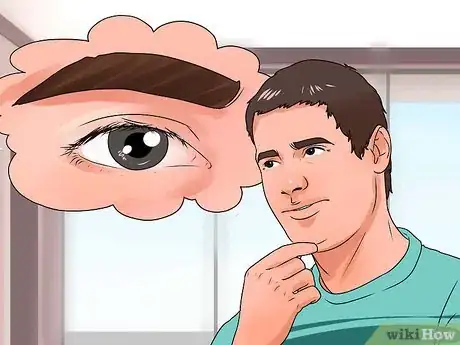
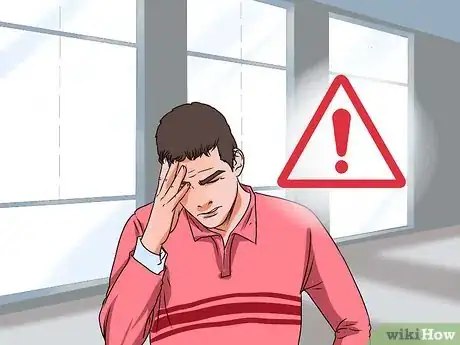
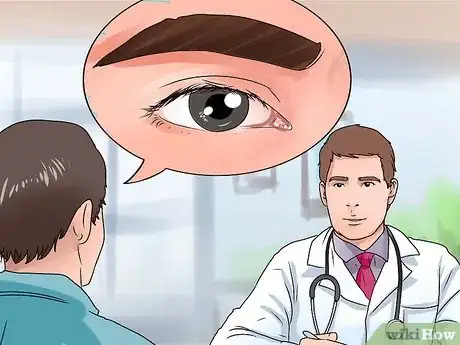
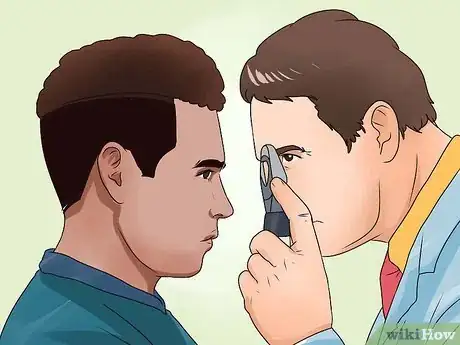
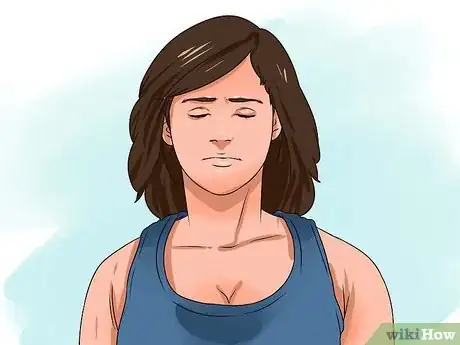
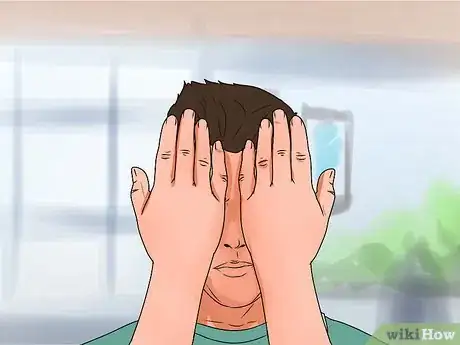
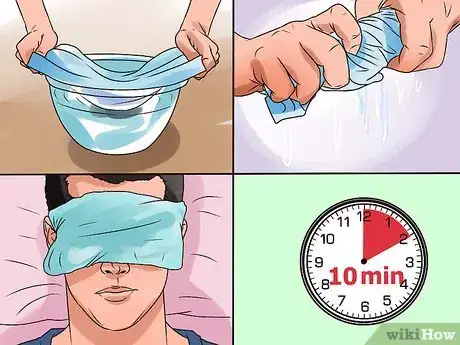
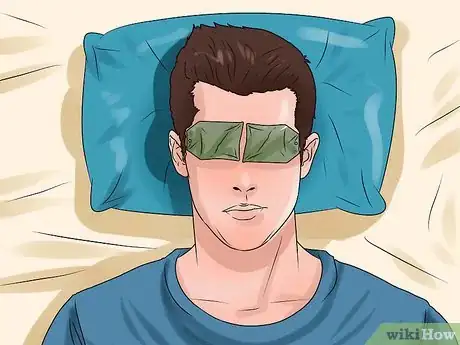
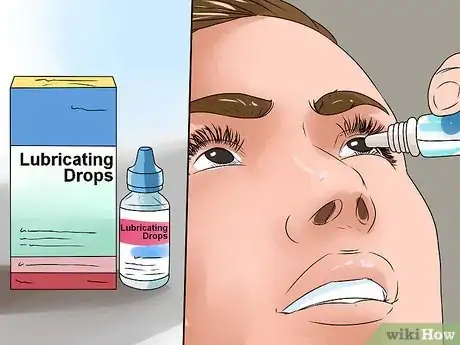

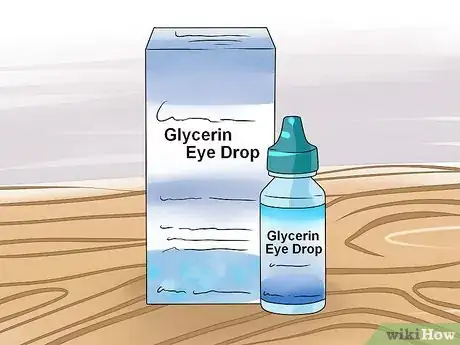
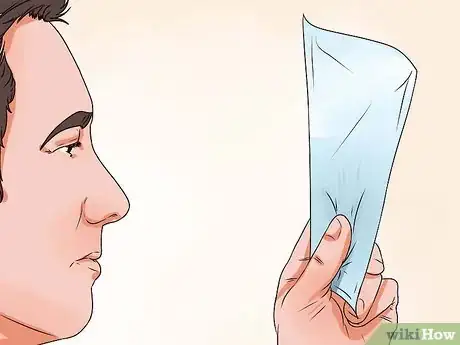

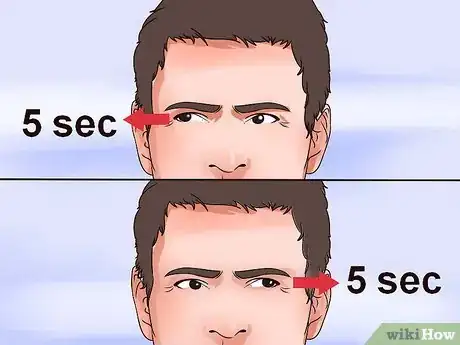
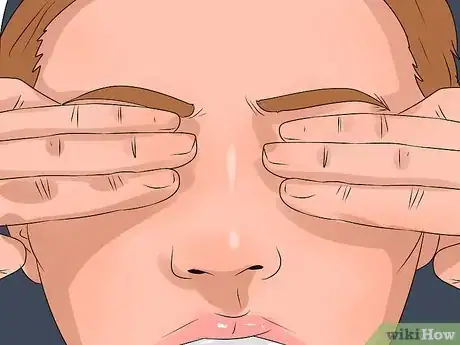
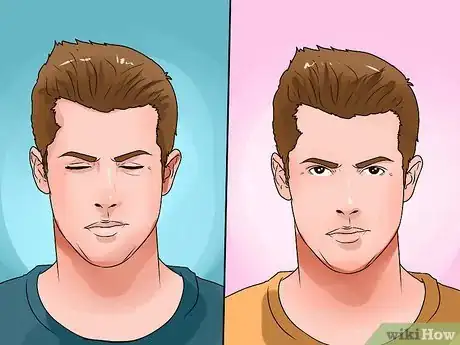
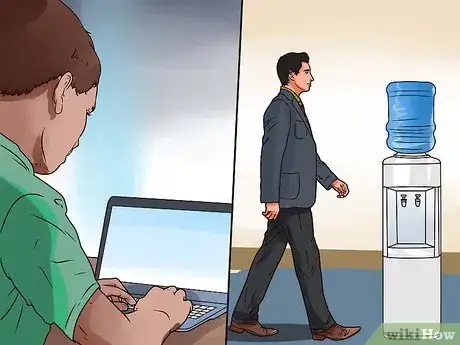

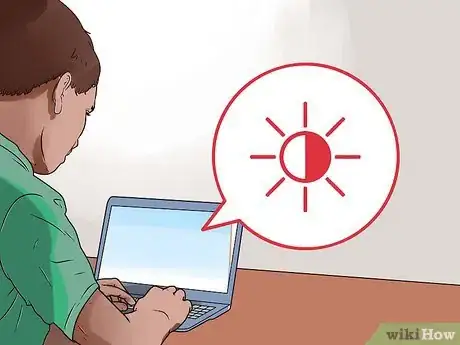

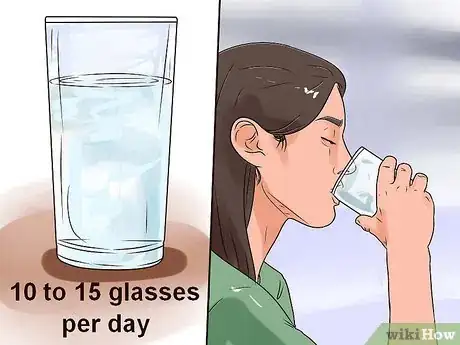
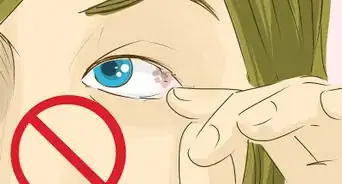
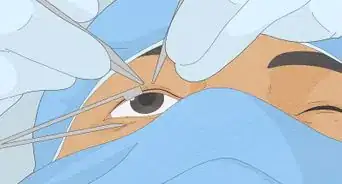


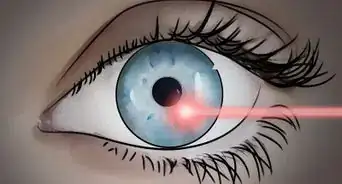
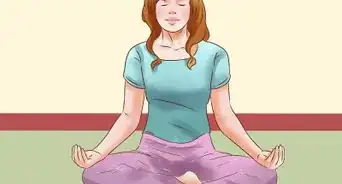

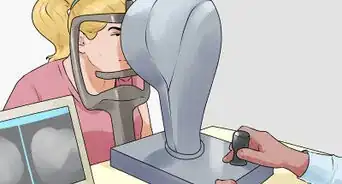
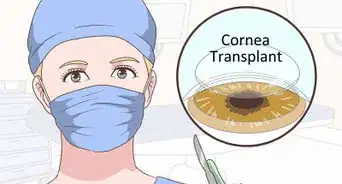



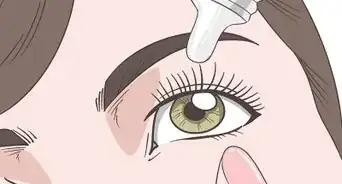
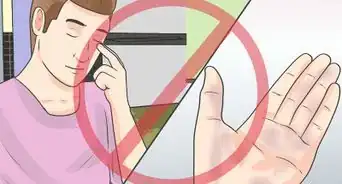












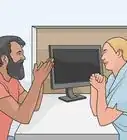




































Medical Disclaimer
The content of this article is not intended to be a substitute for professional medical advice, examination, diagnosis, or treatment. You should always contact your doctor or other qualified healthcare professional before starting, changing, or stopping any kind of health treatment.
Read More...